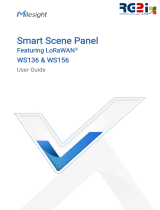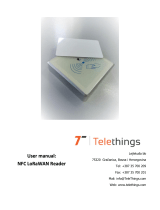
Contents
1. Product Introduction.................................................................................................................................4
1.1 Overview........................................................................................................................................... 4
1.2 Features............................................................................................................................................4
2. Hardware Introduction..............................................................................................................................4
2.1 Packing List......................................................................................................................................4
2.2 Hardware Overview.........................................................................................................................5
2.3 LED Patterns.................................................................................................................................... 5
2.4 Dimensions(mm)............................................................................................................................ 5
3. Operation Guide.........................................................................................................................................6
3.1 NFC Configuration.......................................................................................................................... 6
3.2 LoRaWAN Settings..........................................................................................................................7
3.3 General Settings............................................................................................................................10
3.4 Maintenance.................................................................................................................................. 11
3.4.1 Upgrade...............................................................................................................................11
3.4.2 Backup.................................................................................................................................11
3.4.3 Reset to Factory Default...................................................................................................12
4. Installation................................................................................................................................................13
5. Device Payload........................................................................................................................................ 14
5.1 Basic Information..........................................................................................................................14
5.2 Sensor Data....................................................................................................................................14
5.3 Downlink Commands................................................................................................................... 15



















